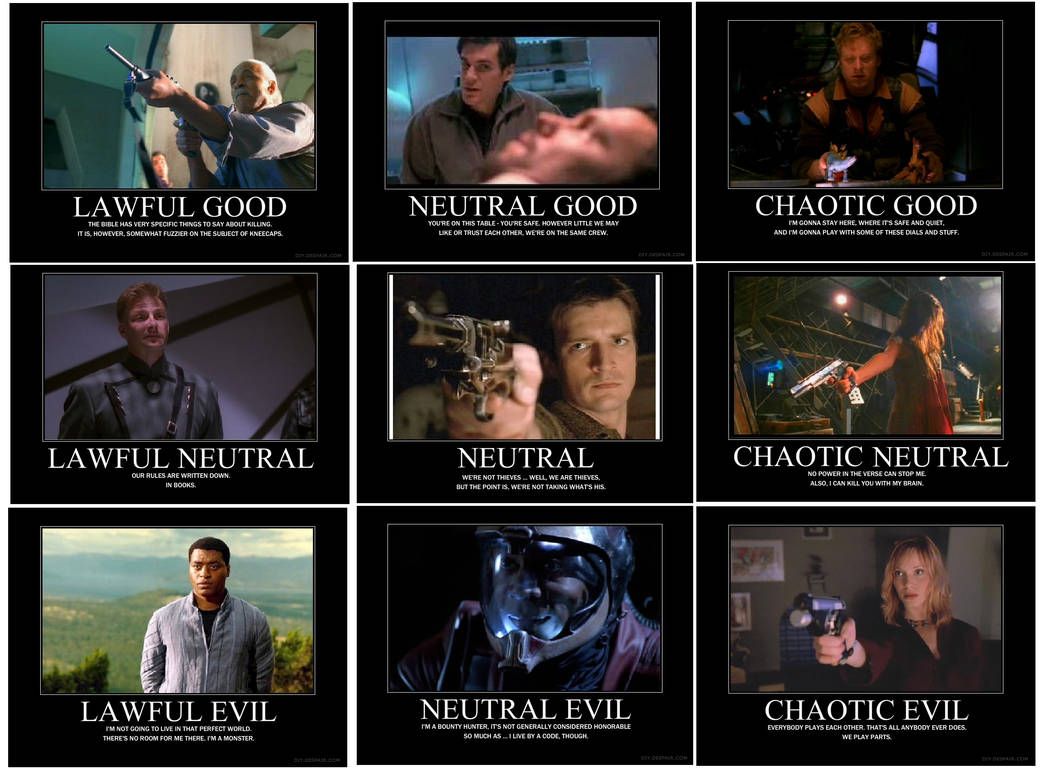alignment
Day 16 of 30. Like millions of other people on this big, blue ball we call home, my partner and I are playing Baldur's Gate 3, which aside from being an excellent game is also one of the first D&D-based games not to include the alignment system.

But if our character, Balder (which itself is a mildly crude Danish reference), were to have an alignment, she'd most likely be neutral good. She has a moral code and seeks to help others; she's not above a bit of subterfuge to achieve those goals; she is wise without being preachy, and a bit coarse-edged and sassy to boot.
(She may also have settled a few in-game arguments with punching, which is not something that translates well to the real world.)
There is one thing, a piece of advice for dungeon masters - the people who run D&D games, portraying the world and townsfolk and monsters while keeping engaging action flowing in accordance with the game rules - that I think is valuable more generally in life:
Alignment isn't a thing you are, it's a thing you do.
There's a reason digital product teams talk about alignment and not consensus. Many people think this is because consensus takes too much time, which is a fair point: it can be difficult to get everyone on the same page.
Still, it's not the main reason - the main reason is that involving everyone in decisions doesn't scale.
It's a decision volume and specialisation problem, not a time problem. Each feature is a microcosm of the cross-functional process: it's backed by product vision, product roadmap, user stories, UX research, UI / interaction design, concrete implementations, testing, and so on. Each feature may have dozens of decisions. On products of sufficient size - and the threshold here is pretty low - no one person can quickly and expertly make decisions across the whole process.
(In a startup, one person may have to do that anyways, but that means the expertly part has to give somewhere.)
Smooth process runs on a substrate of trust. Trust in your teammates and their expertise. Trust that the problems and gaps you see, they see too. Trust in a common goal of delivering a solid product on time, on budget, and with team morale intact.
Trust scales decision-making. It means you trust others with the execution and outcomes of their parts of the process. That will sometimes mean you disagree on the outcomes, and need to work with those outcomes anyways!
So: back to alignment. Alignment is a thing you do: it's a property of people and teams in motion. Alignment is like an eventually consistent version of consensus. You agree on the vision and goals. You trust that the various roles on the team are working in that direction. You check in every so often and course-correct.
Ever had a meeting where, at the end, everyone agreed they were aligned - and then went off to do the very same non-aligned things they were doing before? That's not alignment. Alignment is a thing you do. The alignment happens after that initial meeting, and in the follow-ups and check-ins, and in the inevitable course-corrections that result. A verbal agreement to align is not alignment.
You can, of course, try too hard to force alignment where it has no reason to exist. Or undermine trust with too frequent check-ins. Or fail to notice drift from alignment with too infrequent check-ins. Or lack enough clarity on vision or goals to align in the first place. Or have that clarity, but lack either agreement or team culture to disagree and commit.
There are pitfalls in the alignment process, just as with every process that involves us messy, quirky, fallible humans with our cognitive biases and hang-ups and attachments. Still, product teams seek to find it, as where alignment makes sense and can be achieved, the payoff in scaling decision-making through clarity and trust is worth it.